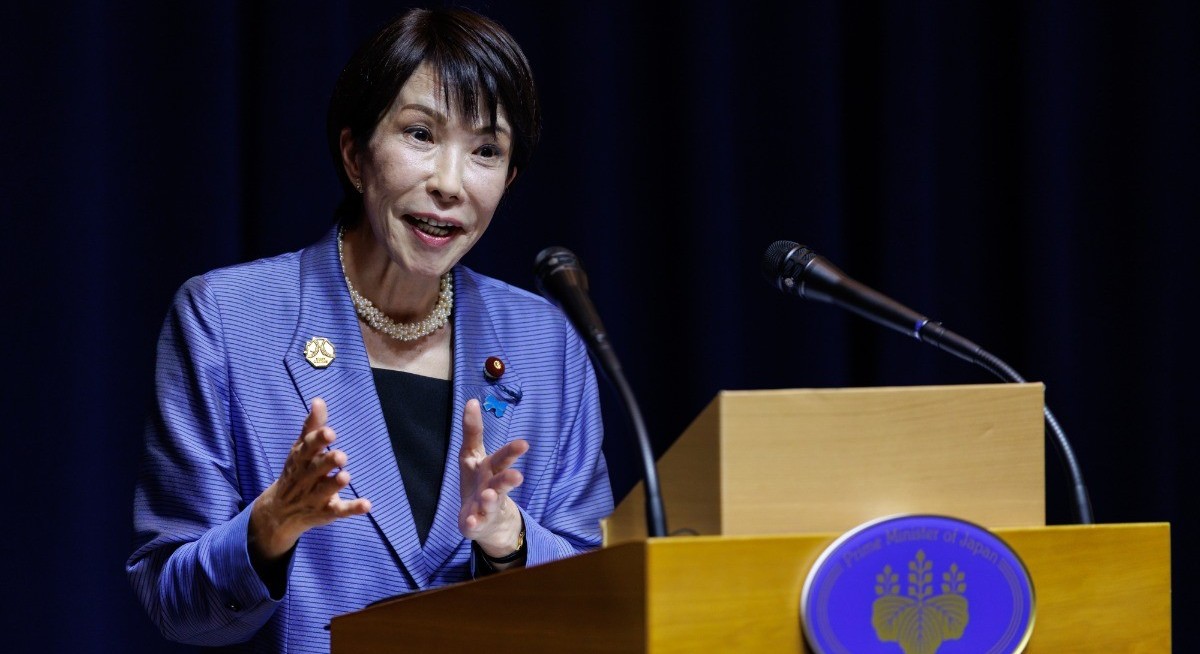(Nov 7): Japanese Prime Minister Sanae Takaichi signalled her determination to ramp up the active use of fiscal policy to power economic growth by dropping an annual budget-balancing goal that favours financial orthodoxy.
Speaking in the lower house of Parliament on Friday, Takaichi said the government’s long-held target of achieving a primary balance surplus will no longer be reviewed on a single-year basis. The primary balance refers to the difference between government spending and revenue after factoring out debt-servicing.
“I would like to take a slightly longer-term view of how I will manage finances from now on,” Takaichi said, referring to multi-year budgets in addition to her previous comments favouring an overall net debt goal that factors in the strength of the nation’s assets too. “It’s fair to think that economic policy has changed.”
The comments are the latest signal of a change of direction in economic policy under way in Japan following Takaichi’s rise to the position of prime minister. Earlier in the day, the prime minister made her latest appointment of a high-profile reflationist adviser to a government panel. It’s a policy shift that investors are closely scrutinising to assess its likely impact on the nation’s longer-term debt dynamics.
Following Takaichi’s comments in Parliament, the yen weakened against the dollar in afternoon trading on Friday.
While most economists don’t expect the kind of burst of spending that led to former UK prime minister Liz Truss’s downfall, many of them expect the nation’s finances to come under greater strain. They are also closely watching Takaichi’s stance on the Bank of Japan (BOJ), given that last year she called hiking rates a “stupid” idea.
See also: Japan to issue over US$73.5 bil in new bonds to fund stimulus
“Takaichi is trying to show a strong resolve to be different from previous ministers, but what she can really do is unclear,” said Toru Suehiro, the chief economist of Daiwa Securities. “The idea of a multi-year budget has been around even when Kishida was the prime minister, so it’s not completely new.”
Still, Takaichi appears determined to shift fiscal policy back towards support for the economy, harking back to a more reflationary policy platform along the lines of her mentor, the late Shinzo Abe. The former prime minister’s namesake policies dominated Japan’s political agenda for nearly a decade. Takaichi said earlier on Friday that under Abenomics the economy had made progress before losing momentum during the Covid-19 pandemic.
The Finance Ministry has long seen the goal of balancing the books outside debt-servicing costs as a cornerstone of its efforts to convince investors at home and abroad that the government is committed to fiscal discipline despite its massive national debt. Compared against the size of its economy, Japan’s debt load of around 230% is the highest among developed economies, according to International Monetary Fund (IMF) data.
See also: Japan approves US$135b stimulus to mitigate inflation pain
Takaichi is refocusing attention to the nation’s much lower net debt-to-gross domestic product (GDP) figure as the yardstick for fiscal discipline. The gauge puts the country’s debt load at 130%, the IMF data showed. She said she aims to achieve nominal growth that exceeds yields on Japanese government bonds.
“This means the government can spend more,” said Yusuke Ikawa, a strategist at BNP Paribas Securities Japan Ltd. “Even if that spending isn’t covered by tax hikes, but instead financed through debt issuance, the debt-to-GDP ratio will still decline.”
Takaichi’s shift back towards the Abenomics’ stance of looser monetary and fiscal policy has also been evident in recent personnel picks.
The economic and fiscal policy council is set to include former BOJ deputy governor Masazumi Wakatabe, who advocated for monetary easing. The newly formed growth strategy panel meanwhile will feature former BOJ board member and reflationist Goushi Kataoka and Credit Agricole chief economist Takuji Aida, known for his favouring of expansive policy.
While the comments and appointments point to a change of policy direction from the fiscal conservatism of Takaichi’s predecessor Shigeru Ishiba, the first big test of how far she will push her agenda comes with an economic package and extra budget expected in the coming weeks.
“Whether the government will actually go all out on fiscal spending is still unclear,” Ikawa said. “But by setting up this kind of framework, it becomes easier for the government to issue bonds.”
To stay ahead of Singapore and the region’s corporate and economic trends, click here for Latest Section
Ikawa expects fresh spending in the range of ¥15 trillion (US$98 billion) to ¥20 trillion with the issuance of more bonds to finance it likely. Last year, an extra budget provided ¥13.9 trillion in additional outlays for Ishiba’s economic measures.
“Given the constraints on Japan’s budget, we have to see how aggressive she can be,” Daiwa’s Suehiro said. “And of course if she becomes really aggressive, the bond market’s reaction will alarm her, so I am not so worried about her being so radical.”
So far Takaichi has emphasised that her fiscal policy will be “responsible” though expansive, and has refrained from explicitly criticising the central bank’s rate hike path, in a potential nod to market concerns. The BOJ next sets policy on Dec 19, with economists largely split on whether the central bank will increase borrowing costs at that point or wait until January.
While the size of the economic package she’s ordered to support the economy and household remains undecided, but if it’s significantly larger than expected, it could reignite market fears over Japan’s fiscal health, and push up long-term bond yields further.
Still, asked by an opposition party member about her views on fiscal populism on Friday, the prime minister dismissed the idea.
“If you mean irresponsible populism aimed at gaining popularity simply by handing out money, handing out money and handing out money — well, that isn’t the policy of the Takaichi Cabinet,” the prime minister said.
Uploaded by Tham Yek Lee





